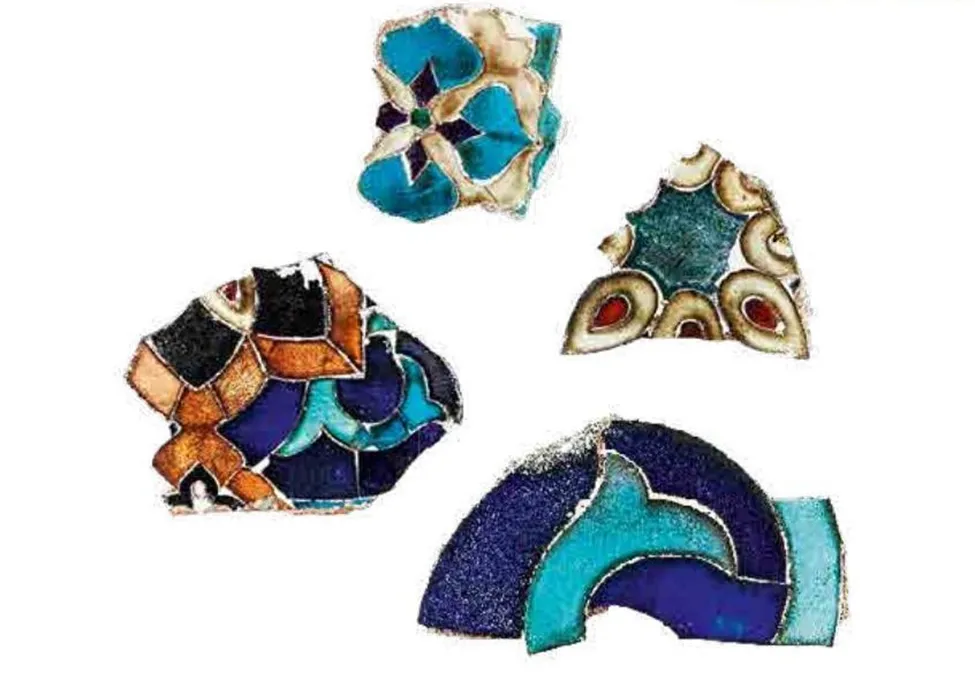It was made in the “Geldwein-Vaulin” workshop in accordance with the technique and technology of manufacturing Central Asian majolica. Shortly before this, industrial production of decorative majolica was tuned up to industrial capacity by Petr Vaulin near St. Petersburg not far from Gatchina in Kikereno, where there were necessary deposits of Cambrian clay. To ensure the effect of maximum authenticity, P. K. Vaulin sent the artist P. M. Maksimov to Turkestan, where he was able to study the method for making this kind of architectural decor. This allowed an amazing accuracy in St. Petersburg’s construction to be achieved in the color nuances inherent in the world famous monuments of Central Asian architecture. Unfortunately, the First World War, which began in 1914, influenced the course of the construction works. The “Geldwein-Vaulin” workshop was reequipped to produce shells. In 1917, it perished in a fire, which prevented the completion of the majolica interior of the mosque. In 1984 – 1987, during the restoration work, the majolica tiling of the dome was completely dismantled and replaced with porcelain. Today, its fragments are displayed at the Museum of the History of Religion.
Until 2008, the mosque remained the only one in St. Petersburg. Its eastern silhouette with the ascending minarets and sky-blue dome today, just like a hundred years ago, is perceived as an integral part of the architectural appearance of the city and amazes its inhabitants and visitors with the refinement of ornamental and calligraphic decoration.
You can learn more about this topic in the book-album “The Collection of the State Museum of the History of Religion” (Volume XII) from the series “Cultural legacy of Uzbekistan in the world collections”.
The general sponsor of the project is the oilfield services company Eriell-Group.

